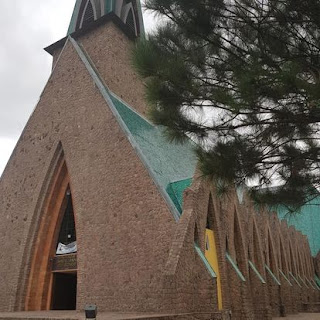Basilique Saint Anne du Congo
The decision to construct the basilica was made in 1936 during an influx of converts to Poto Poto but the foundations were not laid until 1943 when there was a justified need for strong symbols in the capital. The basilica was designed by Roger Erell, a famous French architect who blended Western architectural styles with local building techniques. This was also the first time a European architect worked with local artists such as Benoit Konongo (1919-2008).
The project was expensive and in order to secure more funds from France, a young reporter Joëlle Danterne was hired to film the construction and show it in
the Parisian parishes. Notre-Dame du Congo brought back many donations which along with funds from Morocco and Ethiopia allowed for the continuation of the project. The basilica was finally consecrated in November of 1949.
Damaged during the civil wars of the 1990s and rebuilt over the following years it now is one of the most striking symbols of the city. The 240,000 green roof tiles refer to the generous nature of the natural environment while those in the shape of serpent scales symbolize the evil which remains outside the church. The carved copper doors create a nice contrast to the roof, especially in the afternoon sun. The layout is a classic cross, with a very sharp pointed arch inspired by the spearheads of northern Congo, the earthen shell huts of Chad and the giant bamboo tunnels of Mayombe. The superb tribune is adorned with a wrought iron balustrade made by a local artist who was inspired by pre-colonial weapons.
There is also a pretty grotto with the figure of Mother Mary at the site and a souvenir shop, selling mostly religious paraphernalia.
Like in most tourist sites in Brazzaville, private tours are exclusively in French. Just something to be aware of - if you do not speak the language, perhaps arrange a visit with someone who can, so they can translate for you.





Comments
Post a Comment